When considering the Everest High Pass Trek, trekkers find themselves embarking on a remarkable 21-day journey that not only challenges their physical limits but also offers a profound cultural experience. As they traverse through picturesque Sherpa villages and ancient monasteries, they enjoy the vibrant culture that thrives in the shadow of the mighty peaks. With thoughtful acclimatization days, they can adjust to the altitude while enjoying cozy tea-house accommodations and hearty local meals. Yet, what truly awaits them in those high passes might just change their perspective on adventure forever.
Key Points
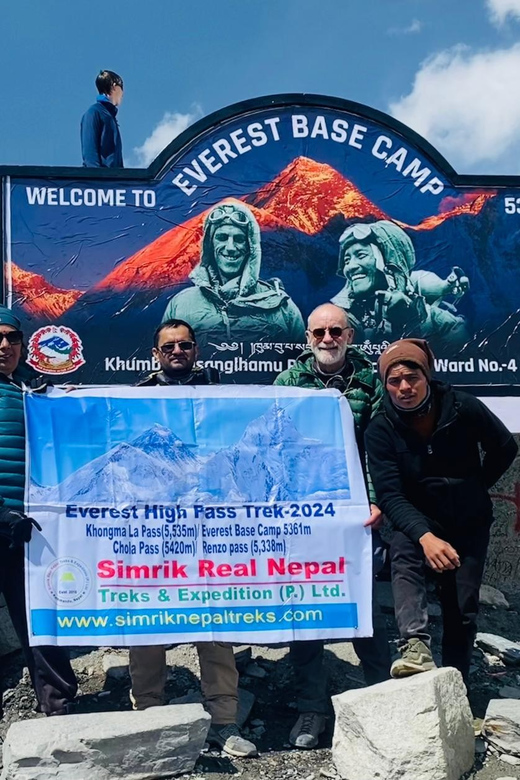
- The Everest High Pass Trek offers breathtaking panoramic views of Everest and Makalu, enhancing the trekking experience with stunning landscapes.
- Key highlights include crossing challenging high passes like Khongma La and Renjo La, which require good physical fitness and acclimatization.
- Trekkers enjoy cozy tea-house accommodations, providing local hospitality and hearty meals like dal bhat and momos, enriching the cultural experience.
- Acclimatization days in Namche Bazaar and Dingboche are vital for adjusting to altitude, helping to prevent altitude sickness.
- Engaging with Sherpa culture through visits to ancient monasteries and learning basic Nepali phrases adds depth to the trekking experience.
It's also worth checking out some other tours and experiences nearby.
Trek Overview and Itinerary
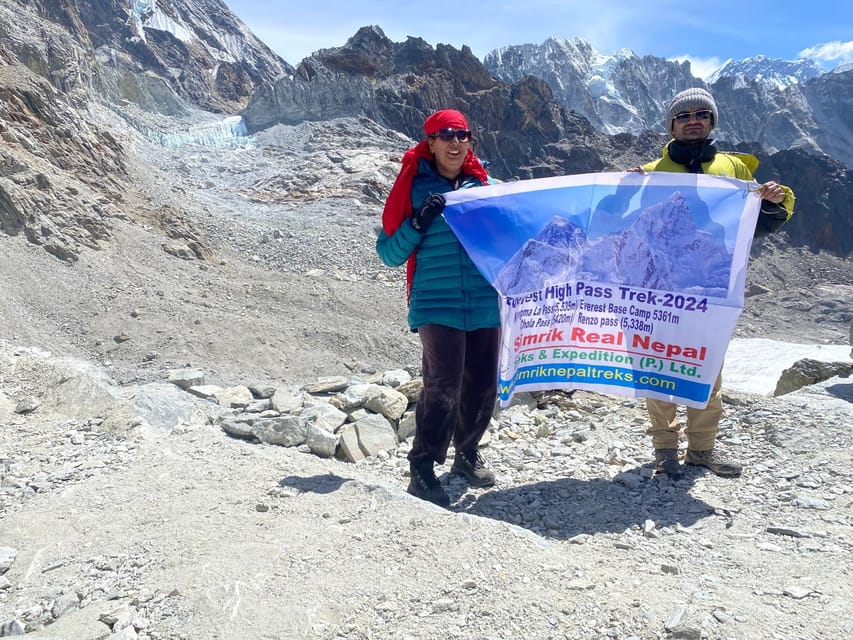
The Everest High Pass Trek offers adventurers a thrilling 21-day journey through some of the most breathtaking landscapes in the Himalayas, combining cultural experiences with challenging terrain.
From the bustling streets of Kathmandu to the serene beauty of Gokyo, trekkers can expect a well-planned itinerary that includes acclimatization days and stunning views at each stop.
Starting with a flight to Lukla, the trek winds through vibrant villages like Namche Bazaar, where they’ll experience Sherpa culture firsthand.
Emphasizing safety and comfort, the trek includes tea-house accommodations and three meals daily.
It’s vital for trekkers to stay hydrated and take it slow, allowing their bodies to adjust to the altitude while soaking in the exquisite scenery along the way.
Key Highlights of the Trek
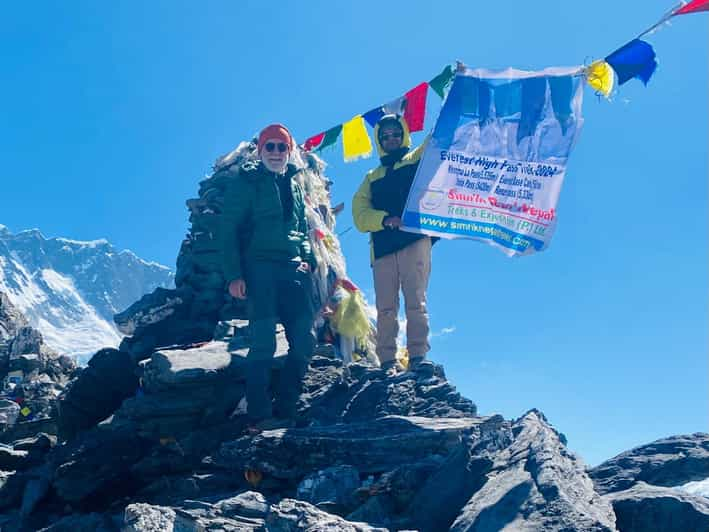
Expect unforgettable panoramic views of towering peaks, including Everest and Makalu, as trekkers navigate through diverse landscapes and charming Sherpa villages along the Everest High Pass Trek.
The journey showcases vibrant rhododendron forests, serene glacial lakes, and the iconic Khumbu icefall.
Trekkers get to experience the rich Sherpa culture, visiting ancient monasteries like Tengboche and engaging with friendly locals.
The challenge of crossing high passes, such as Khongma La and Renjo La, offers a true sense of accomplishment and breathtaking vistas.
It’s essential to acclimatize properly, so taking the time to rest and enjoy the surroundings will enhance the experience.
Don’t forget to capture those stunning moments; they’ll be memories to cherish long after the trek ends.
Accommodation and Meals
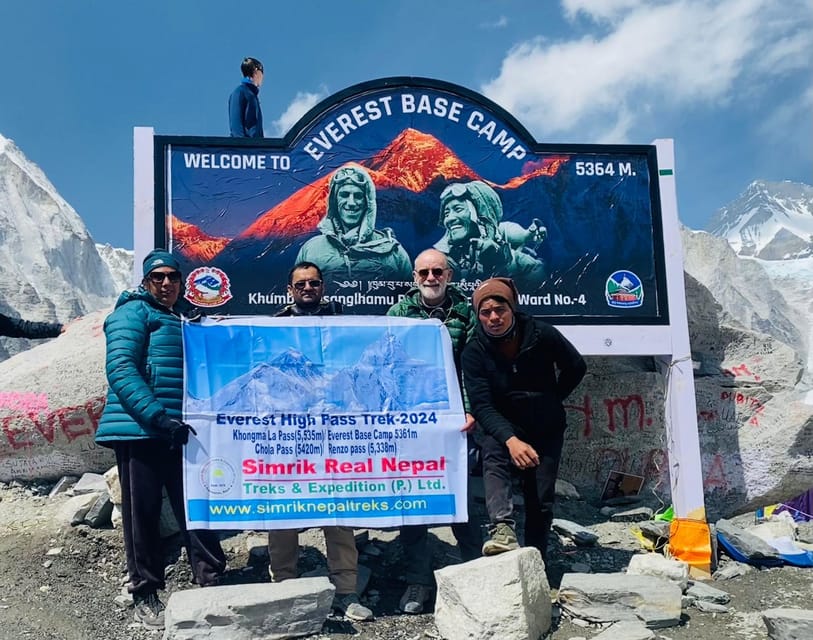
Accommodation during the Everest High Pass Trek typically involves cozy tea-house settings, where trekkers can enjoy the warmth of local hospitality after a day of exploring the stunning Himalayas.
These tea houses provide a unique cultural experience, often adorned with local decor and offering a chance to interact with fellow adventurers.
As for meals, trekkers can expect hearty, nutritious options like dal bhat, momos, and various noodle dishes.
It’s important to stay hydrated, so drinking plenty of water and tea is essential. Many tea houses cater to dietary restrictions, but it’s wise to confirm ahead of time.
Preparation for the Trek
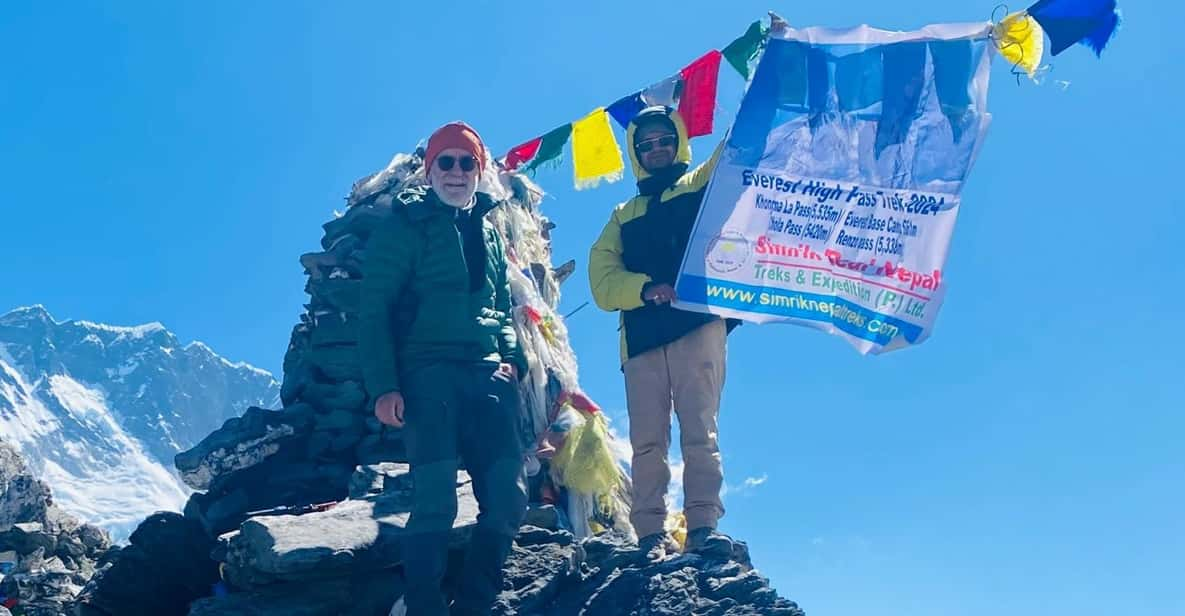
Preparing for the Everest High Pass Trek requires a mix of physical training, mental readiness, and gathering essential gear to ensure a smooth adventure through the majestic Himalayas.
Trekking in high altitudes demands good cardiovascular fitness; so, regular hikes, jogging, or cycling can work wonders. Plus, mental preparation is key—visualizing the journey and embracing the challenges help build resilience.
Connecting with local culture is equally important; learning a few Nepali phrases can enhance interactions with guides and locals, making the trek more enriching.
Lastly, understanding the altitude effects and acclimatization process is crucial. By addressing these aspects, trekkers can fully enjoy the breathtaking landscapes and unique experiences awaiting them in the heart of the Himalayas.
Important Gear and Equipment
When tackling the Everest High Pass Trek, having the right gear and equipment can make all the difference in ensuring a comfortable and safe adventure. Essential items include sturdy footwear, layered clothing, and proper hydration systems. Each piece serves a purpose, enhancing the trek experience.
Here’s a quick reference table for essential gear:
| Gear Type | Recommended Item | Purpose |
|---|---|---|
| Footwear | Waterproof trekking boots | Provides stability and grip |
| Clothing | Base and insulating layers | Regulates body temperature |
| Hydration | Water bottles or bladders | Keeps hydration levels up |
| Sleeping | Lightweight sleeping bag | Ensures warmth at night |
| Trekking Poles | Adjustable trekking poles | Reduces strain on joints |
With the right equipment, trekkers can fully embrace the breathtaking beauty of the Everest region.
Altitude and Acclimatization
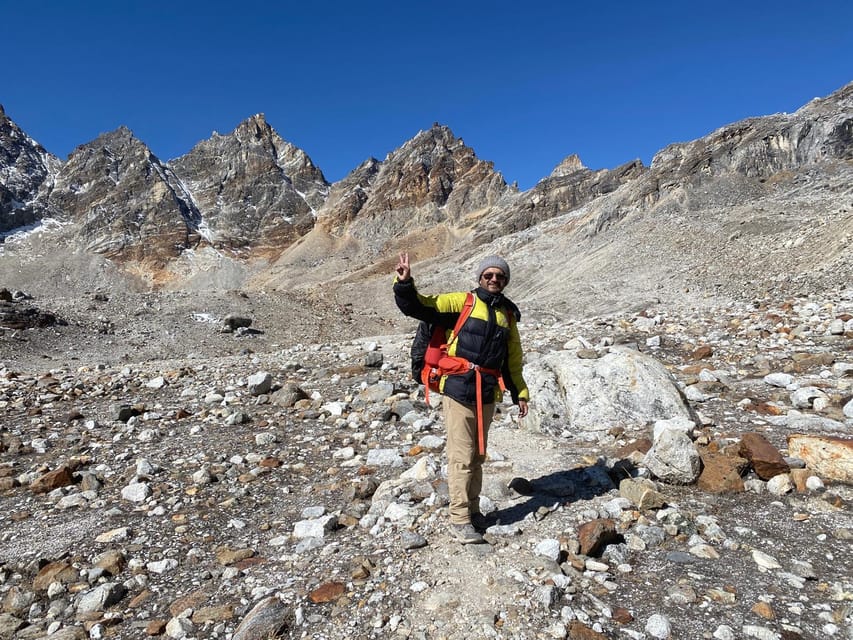
Trekkers should be aware that altitude can significantly affect their bodies, making acclimatization a crucial part of the Everest High Pass Trek experience.
As they ascend, their bodies need time to adjust to the decreasing oxygen levels. It’s essential to incorporate acclimatization days into the itinerary, especially in places like Namche Bazaar and Dingboche.
During these rest days, trekkers should hydrate well, eat nutritious meals, and take gentle walks to promote circulation.
Listening to one’s body is vital—symptoms of altitude sickness like headaches or nausea shouldn’t be ignored.
Cultural Insights and Experiences
The Everest High Pass Trek offers a unique opportunity to take in the rich tapestry of Sherpa culture, where ancient traditions blend seamlessly with breathtaking landscapes.
Trekking through this region, adventurers encounter vibrant monasteries, colorful prayer flags, and the warm hospitality of local Sherpa families. They’ll witness rituals that have been practiced for centuries, such as the morning chants at Tengboche Monastery.
Travelers should take the time to learn a few basic Nepali phrases; locals appreciate the effort. Sampling traditional dishes like momos and dal bhat enriches the experience, providing insight into everyday life.
Engaging with the community, whether through shared stories or cultural exchanges, can create lasting memories and deepen one’s appreciation for this remarkable journey.
Safety Tips and Guidelines
Safety should always be a top priority during the Everest High Pass Trek, so staying informed about altitude sickness and acclimatization practices is essential for a successful journey.
Trekking at high altitudes can be challenging, and recognizing symptoms like headaches or dizziness early can make all the difference. It’s vital to hydrate regularly and take rest days seriously to allow the body to adjust.
Always listen to your guide, as they’re familiar with the terrain and can offer invaluable advice. Packing a first-aid kit with necessary medications is also a smart move.
Here's a few more nearby tours and experiences we think you'll like.
Frequently Asked Questions
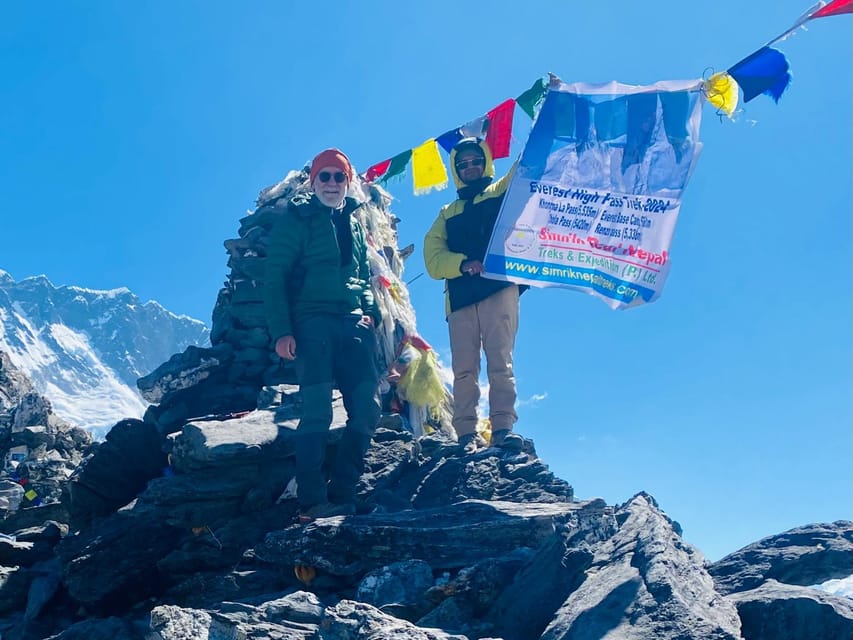
What Is the Best Time to Undertake the Everest High Pass Trek?
The best time for trekking typically falls between September to November and March to May. During these months, trekkers enjoy clear skies, moderate temperatures, and vibrant landscapes, making the experience both enjoyable and memorable.
Are There Age Restrictions for Participants on This Trek?
There’s no strict age limit for participants, but guides often recommend trekkers be at least 12 years old. Older trekkers should ensure they’re physically fit, as altitude can affect everyone differently.
How Physically Challenging Is the Everest High Pass Trek?
It’s quite physically demanding, requiring good fitness levels, stamina, and acclimatization. Participants should be prepared for long days of trekking at high altitudes, where altitude sickness can be a real concern. Proper preparation’s essential.
Is Travel Insurance Required for the Trek?
Travel insurance isn’t just recommended; it’s essential for any trekker. It covers unexpected medical expenses, trip cancellations, and gear loss, ensuring trekkers can focus on adventure without worrying about financial setbacks or emergencies.
What Is the Policy for Cancellations and Refunds?
Regarding cancellations and refunds, travelers should check the specific policy details. Generally, they’ll find that fees apply for last-minute changes, and earlier cancellations often yield partial refunds. It’s wise to read the fine print carefully.
Not for you? Here's more of our most recent tour reviews happening neaby
- Nepal Tibet Bhutan Tour
- 18 DAYS LOBUCHE PEAK CLIMBING – NO TIPS POLICY
- 17 DAYS MERA PEAK CLIMBING – NO TIPS POLICY
- From Kathmandu: Namche Bazaar Trek
- Kailash Mansarovar Yatra
- Nepal: 10-DAY Luxury Tour With Everest Base Camp Helicopter
- Upper Dolpo Trek
- Kathmandu: Cooking Class in Nepal
- VVIP Luxury Tour Nepal 7 Night 8 Days Package.
- Nepal: Manaslu Circuit Trekking – Mountain of the Spirit
- Dhorpatan Trek & Hunting: Nepal Wilderness 7 Days
- Poon Hill Trek With Hot Spring
- Explore the Enigmatic Origins of Sankhu
- Kathmandu: Everest Base Camp Helicopter Tour
- Everest Base Camp Trek
Recap
The Everest High Pass Trek isn’t just a journey through stunning landscapes; it’s a deep dive into the vibrant Sherpa culture and rich history of the Himalayas.
With proper preparation and respect for the altitude, trekkers can create unforgettable memories while crossing those breathtaking passes.
Embrace the challenge, savor the local flavors, and connect with the welcoming communities along the way.
This trek promises not only adventure but also a chance to enrich one’s understanding of this incredible region.
